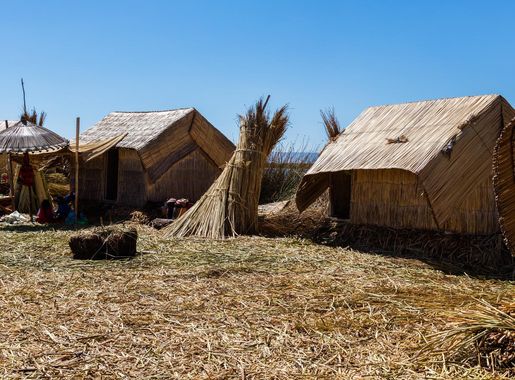
Puno: The Folkloric Heart of Peru
Discover Puno, the folkloric heart of Peru, with its vibrant festivals, ancient traditions, and the breathtaking beauty of Lake Titicaca.
Puno, nestled on the shores of Lake Titicaca, is a city rich in culture and history. Known as the folklore capital of Peru, Puno offers vibrant festivals, colorful traditional costumes, and captivating music that showcases the soul of the Andean people. The city is a key stop for travelers exploring the highlands of Peru and Bolivia, providing a unique glimpse into the traditions and lifestyles of the indigenous communities. A visit to Puno would not be complete without experiencing Lake Titicaca, the highest navigable lake in the world. The lake's deep blue waters are home to the famous Uros floating islands, man-made islands constructed entirely of reeds. Here, visitors can learn about the unique way of life of the Uros people who have lived on the lake for centuries. Another highlight is the island of Taquile, known for its beautiful textiles and cooperative living culture, where visitors can enjoy the stunning landscapes and immerse themselves in local traditions. Puno also boasts numerous archaeological sites and historical landmarks. Sillustani, a pre-Incan burial ground, features impressive chullpas (stone towers) that offer a peek into ancient funerary practices. The city itself is filled with colonial architecture, charming plazas, and lively markets where tourists can savor traditional Peruvian cuisine and shop for local crafts. Puno's rich blend of natural beauty, cultural heritage, and festive spirit makes it an unforgettable destination for any traveler.
Local tips in Puno
- Visit during the first week of February to experience the Festival of the Virgin of Candelaria, one of the largest cultural events in Peru.
- Pack warm clothing, as temperatures can drop significantly, especially at night, due to Puno's high altitude.
- Take a boat tour to the Uros floating islands and Taquile Island for a unique cultural experience and stunning views of Lake Titicaca.
- Try the local dish 'trucha' (trout) freshly caught from Lake Titicaca, often served grilled or fried.
- Acclimate to the high altitude by taking it easy on your first day and drinking coca tea, which helps alleviate altitude sickness.
Puno: The Folkloric Heart of Peru
Puno, nestled on the shores of Lake Titicaca, is a city rich in culture and history. Known as the folklore capital of Peru, Puno offers vibrant festivals, colorful traditional costumes, and captivating music that showcases the soul of the Andean people. The city is a key stop for travelers exploring the highlands of Peru and Bolivia, providing a unique glimpse into the traditions and lifestyles of the indigenous communities. A visit to Puno would not be complete without experiencing Lake Titicaca, the highest navigable lake in the world. The lake's deep blue waters are home to the famous Uros floating islands, man-made islands constructed entirely of reeds. Here, visitors can learn about the unique way of life of the Uros people who have lived on the lake for centuries. Another highlight is the island of Taquile, known for its beautiful textiles and cooperative living culture, where visitors can enjoy the stunning landscapes and immerse themselves in local traditions. Puno also boasts numerous archaeological sites and historical landmarks. Sillustani, a pre-Incan burial ground, features impressive chullpas (stone towers) that offer a peek into ancient funerary practices. The city itself is filled with colonial architecture, charming plazas, and lively markets where tourists can savor traditional Peruvian cuisine and shop for local crafts. Puno's rich blend of natural beauty, cultural heritage, and festive spirit makes it an unforgettable destination for any traveler.
When is the best time to go to Puno?
Iconic landmarks you can’t miss
Plaza Mayor de Puno
Explore the vibrant Plaza Mayor de Puno, a cultural hub in Peru with stunning architecture, lively events, and delicious local cuisine.
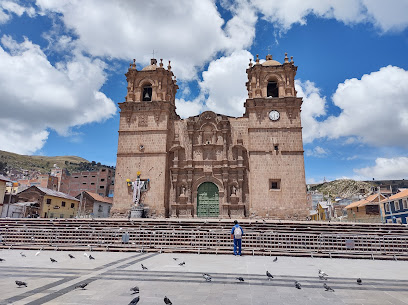
Pino Park
Discover the beauty and tranquility of Pino Park, a cultural oasis in the heart of Puno, Peru, where nature and heritage come together.
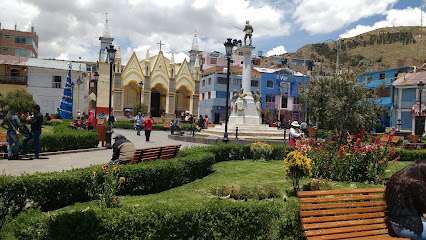
Ricos Pan
Discover the flavors of Puno at Ricos Pan, a cozy coffee shop and diner offering delightful local and international cuisine.

Mareas Ceviche y Mas
Discover the best of Peruvian seafood at Mareas Ceviche y Mas, a top-rated restaurant in Puno, known for its fresh ceviche and vibrant atmosphere.
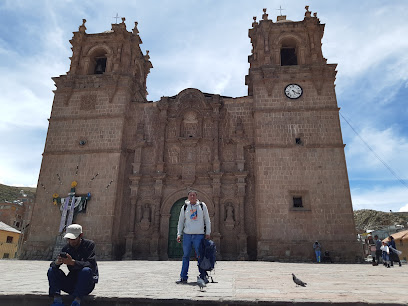
Mirador Puma de Puno
Experience stunning panoramic views of Lake Titicaca and the Andes at Mirador Puma de Puno, a must-visit observation deck in Peru's breathtaking landscape.
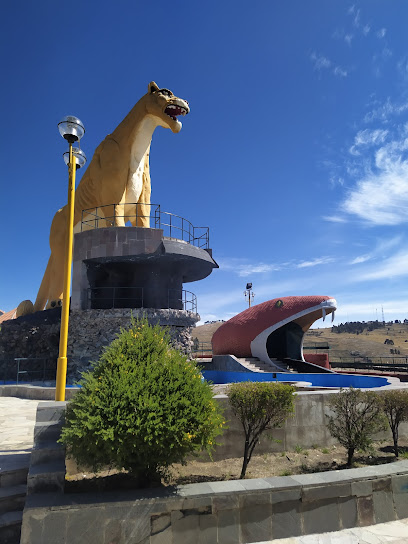
Cerrito Huajsapata
Discover breathtaking views of Lake Titicaca and Puno city from Cerrito Huajsapata, an essential stop for every traveler in Peru.
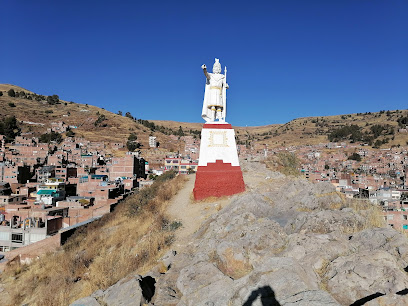
Mojsa Restaurant
Experience the rich flavors of Peru at Mojsa Restaurant in Puno, a culinary gem offering delightful traditional and contemporary dishes.
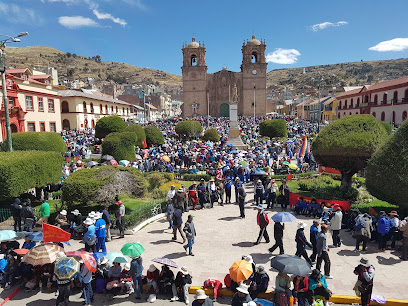
La Casona Restaurant
Discover the flavors of Peru at La Casona Restaurant, a culinary haven in Puno known for its grilled delicacies and welcoming ambiance.
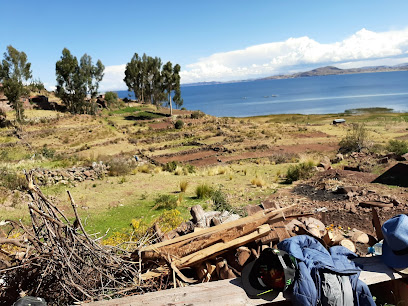
Mirador El Condor
Experience breathtaking views and rich culture at Mirador El Condor in Puno, Peru, a must-visit destination for every traveler.
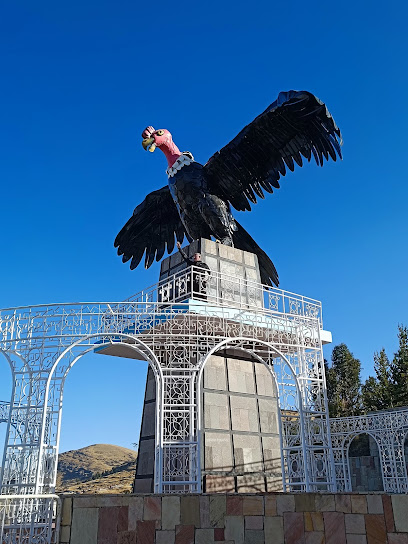
Sonesta Hotel Posadas Del Inca Puno
Discover luxury and comfort at Sonesta Hotel Posadas Del Inca Puno, your gateway to the enchanting Lake Titicaca and vibrant Puno culture.
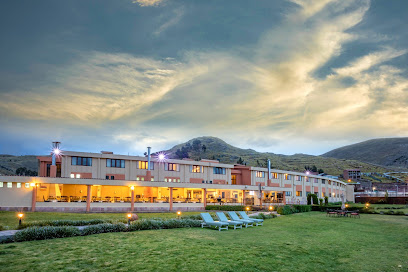
Arco Deustua
Discover the historic Arco Deustua in Puno, Peru, a majestic archway symbolizing the city's rich heritage and vibrant local culture.
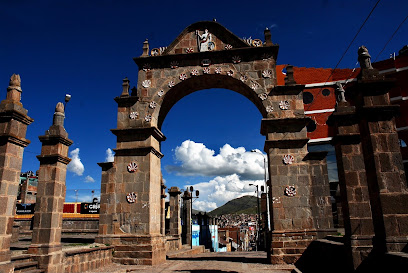
Cafe Bar de la Casa del corregidor
Discover the culinary delights of Puno at Cafe Bar de la Casa del Corregidor, where local flavors meet a cozy atmosphere for an unforgettable dining experience.
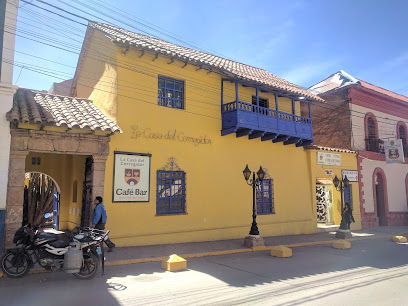
Tulipans Restaurant
Experience the rich flavors of Peru at Tulipans Restaurant in Puno, where culinary tradition meets modern dining in a welcoming atmosphere.
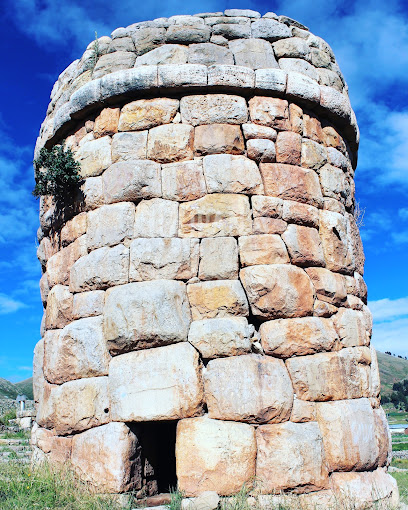
Casa Andina Premium Puno
Experience the beauty of Lake Titicaca from the luxurious Casa Andina Premium Puno, where comfort meets Peruvian culture.
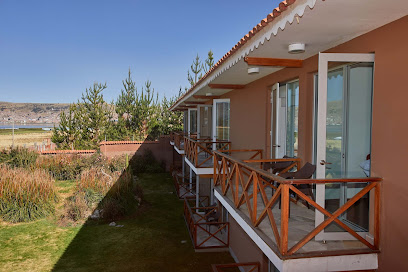
Balcones de Puno
Experience the rich flavors of Peruvian cuisine at Balcones de Puno, where picturesque views meet culinary excellence in the heart of Puno.

Unmissable attractions to see
Pino Park
Discover the enchanting beauty of Pino Park in Puno, Peru - a serene escape perfect for nature lovers and adventure seekers alike.
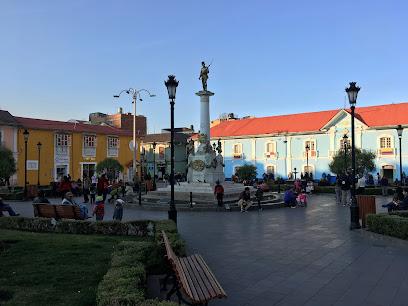
Sillustani
Explore the ancient tombs of Sillustani, an archaeological site in Peru offering breathtaking views and a glimpse into the Colla civilization's rich history.
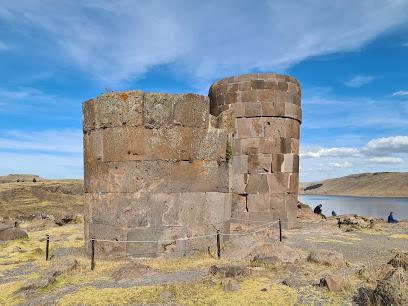
Mirador Puma de Puno
Experience breathtaking views of Lake Titicaca and the city of Puno at Mirador Puma de Puno, a must-visit observation deck in Peru.
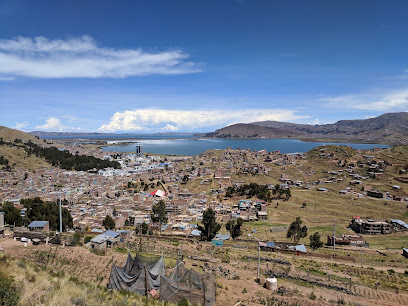
Inca Uyo
Explore Inca Uyo: A Sacred Site of the Inca Civilization in Chucuito, Peru, Offering a Unique Glimpse into Ancient Culture and Spiritual Practices.

Mirador El Condor
Discover the breathtaking views of Lake Titicaca and Puno from Mirador El Condor, a must-visit attraction for every traveler.
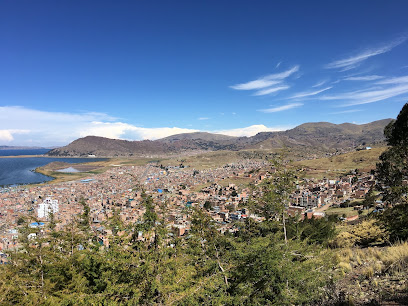
Taquile Island
Experience the tranquility and cultural richness of Taquile Island, a hidden gem in Lake Titicaca that captivates with its breathtaking views and indigenous heritage.
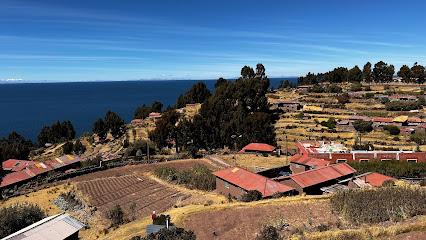
Arco Deustua
Experience the rich cultural heritage of Puno at Arco Deustua, a historic landmark that captures the essence of Peru's vibrant history.
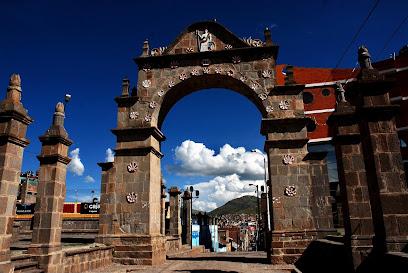
Cafe Bar de la Casa del corregidor
Discover the flavors of Puno at Cafe Bar de la Casa del Corregidor, a charming eatery offering delicious brunch and delightful local cuisine.
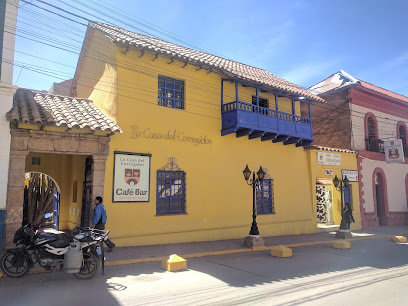
Puno Cathedral
Discover the Puno Cathedral, a stunning colonial masterpiece and cultural landmark in the heart of Puno, Peru, rich in history and artistry.
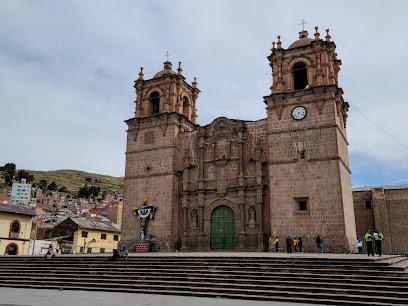
Amantaní
Experience the tranquility and rich cultural heritage of Amantani Island, a serene gem in Lake Titicaca, perfect for an unforgettable travel adventure.
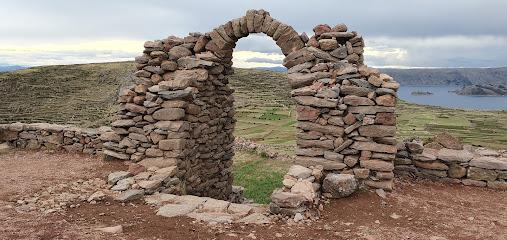
Museo Carlos Dreyer
Discover the artistic legacy of Peru at Museo Carlos Dreyer, a cultural gem in Puno showcasing vibrant art and rich history.
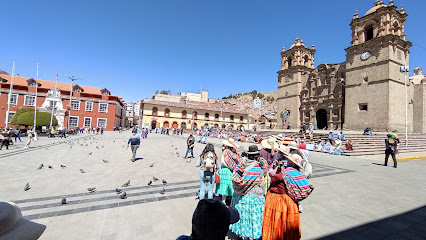
Coca Museum & Custumes
Explore the rich cultural heritage of coca at the Coca Museum & Costumes in Puno, an insightful museum showcasing history and traditional attire.
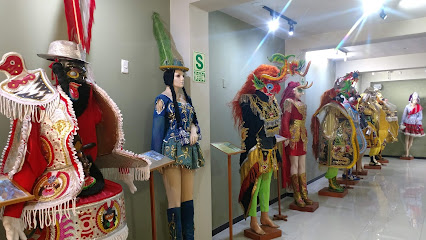
Iglesia de San Juan Bautista - Puno, Santuario de la Virgen de la Candelaria.
Experience the spiritual heart of Puno at Iglesia de San Juan Bautista, a shrine dedicated to the Virgen de la Candelaria, rich in culture and tradition.
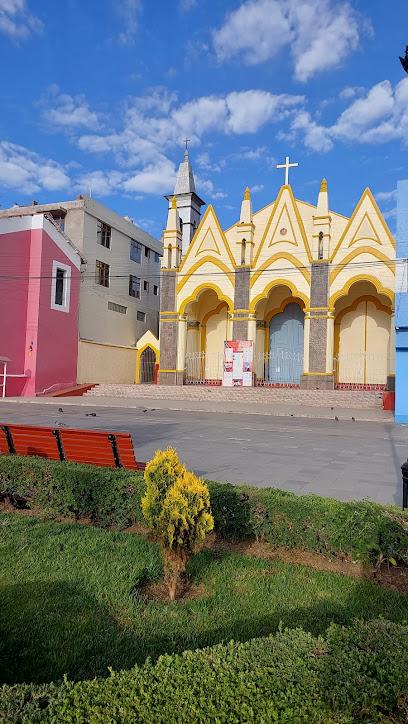
Uros Floating Islands
Discover the Uros Floating Islands, a unique cultural experience on Lake Titicaca, showcasing vibrant reed islands and the timeless traditions of the Uros people.

Puno Tours
Discover the beauty and culture of Puno with Puno Tours, your trusted travel agency for unforgettable experiences in Lake Titicaca.
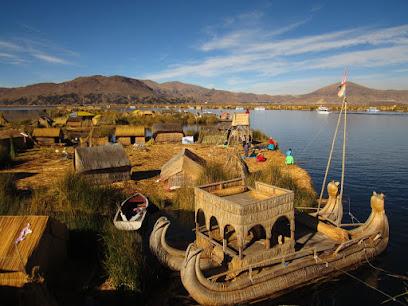
Essential places to dine
Mojsa Restaurant
Experience authentic Peruvian cuisine at Mojsa Restaurant in Puno—where every dish tells a story of tradition and flavor.
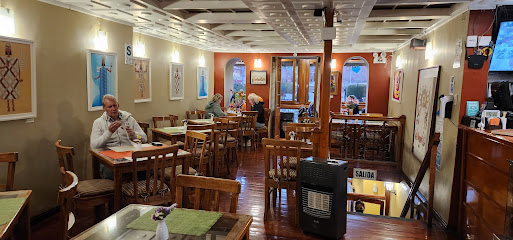
La Casona Restaurant
Experience the flavors of Peru at La Casona Restaurant in Puno, where delightful dishes meet warm hospitality.
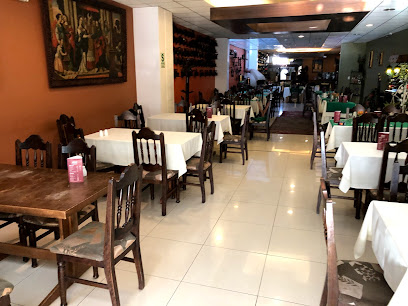
Cafe Bar de la Casa del corregidor
Discover the flavors of Puno at Cafe Bar de la Casa del Corregidor - where local cuisine meets cozy ambiance.
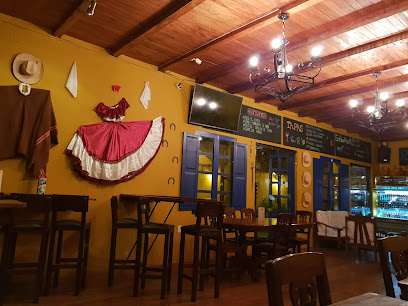
Tulipans Restaurant
Experience the authentic flavors of Peru at Tulipans Restaurant in Puno - where culinary excellence meets warm hospitality.
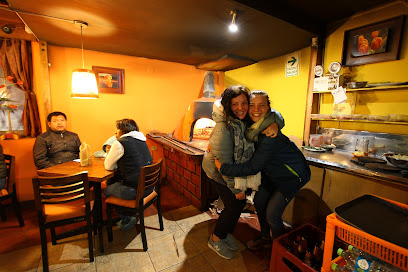
Sabor Peruano Chicharroneria
Experience authentic Peruvian cuisine at Sabor Peruano Chicharroneria in Puno – where every dish celebrates local flavors and traditions.
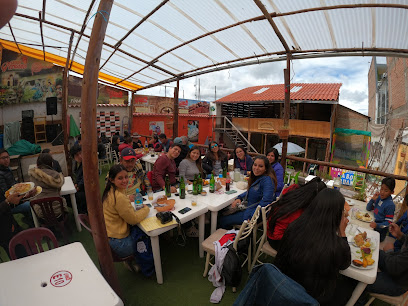
La Estancia Grill
Experience the best of Peruvian cuisine at La Estancia Grill in Puno – a delightful blend of tradition and flavor awaits you.
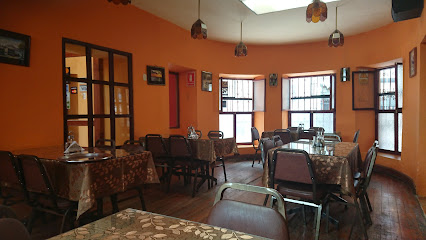
Balcones de Puno
Discover authentic Peruvian cuisine at Balcones de Puno with stunning views of Lake Titicaca - a must-visit dining experience.
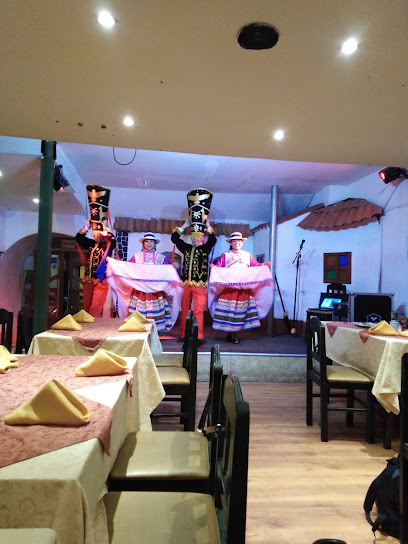
Remix Pizzería Resto Café Bar
Discover the vibrant flavors of Remix Pizzería Resto Café Bar in Puno, where delicious pizzas meet refreshing cocktails in a lively atmosphere.
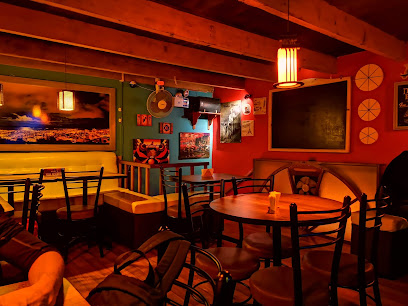
Loving Hut Vegan
Experience delicious plant-based cuisine at Loving Hut Vegan in Puno - where health meets flavor in every bite.
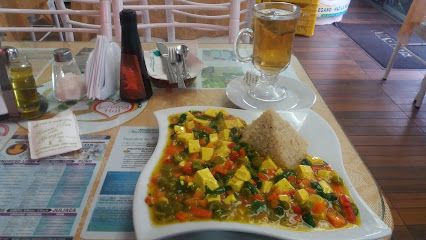
La Choza de Oscar
Experience authentic Peruvian cuisine at La Choza de Oscar in Puno, where tradition meets flavor in a warm and inviting setting.
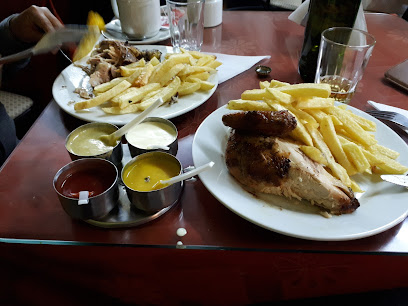
Los Uros
Explore Los Uros: A Unique Floating Island Community on Lake Titicaca Where Culture Meets Nature.
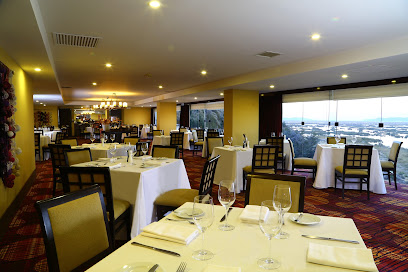
Ekeko's Restaurant
Discover authentic Peruvian flavors in Lima at Ekeko's Restaurant – where every meal tells a story.
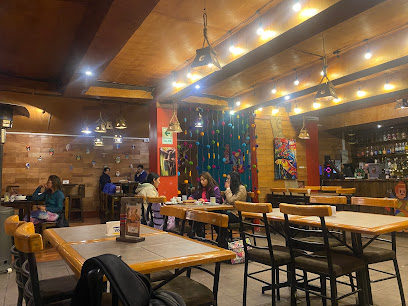
La Hosteria
Experience authentic Peruvian cuisine at La Hosteria in Puno - where every dish tells a story of tradition and flavor.
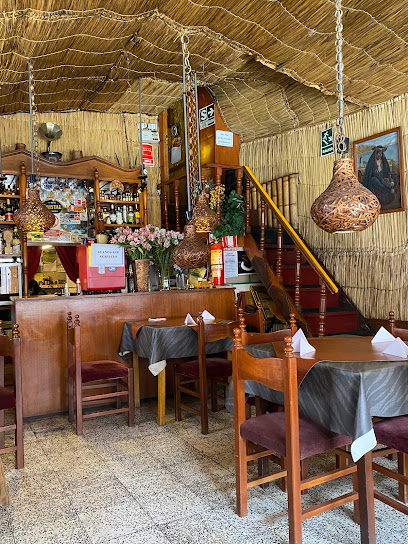
incabar
Discover the flavors of Peru at Incabar in Puno—where authentic cuisine meets warm hospitality.
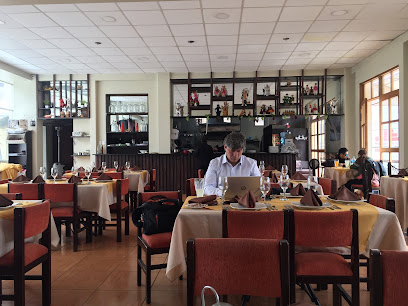
Sushi Ten Bento
Experience authentic Japanese cuisine at Sushi Ten Bento in Puno—where tradition meets flavor in every bite.

Markets, malls and hidden boutiques
Tienda109.pe
Discover unique artisan gifts at Tienda109.pe, Puno's premier gift shop, offering a taste of local culture and craftsmanship.
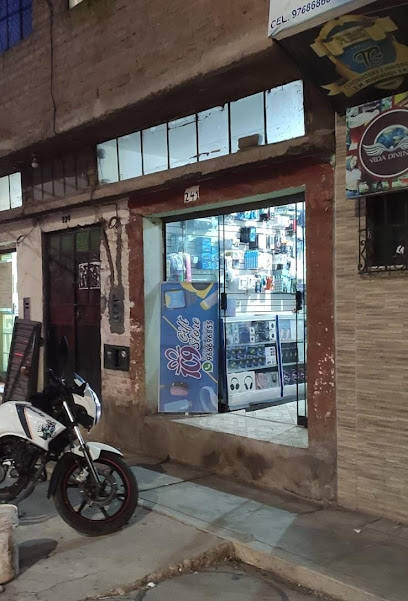
Sumaq Ruway
Explore the vibrant styles of Sumaq Ruway, where traditional Peruvian fashion meets modern trends in the heart of Puno.
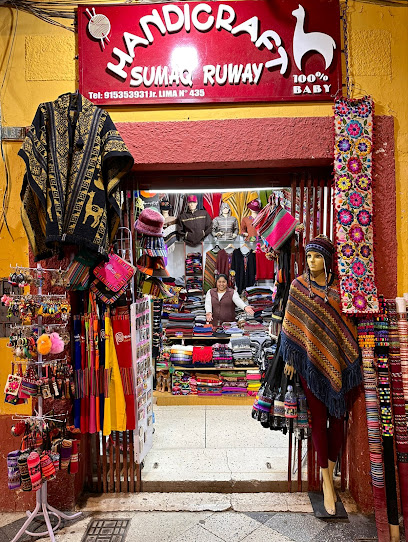
Qoribella store
Explore Qoribella Store in Puno for unique Peruvian gifts, handmade treasures, and a taste of local culture.
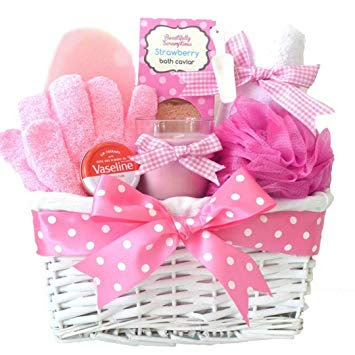
ILLARI SOUVENIRS ANDINOS
Explore the vibrant world of Andean crafts at Illari Souvenirs Andinos, where each item tells a story of culture and tradition.

Maracuyá Boutique- Puno
Discover unique women's fashion at Maracuyá Boutique, a stylish haven in Puno that blends contemporary design with traditional Peruvian flair.
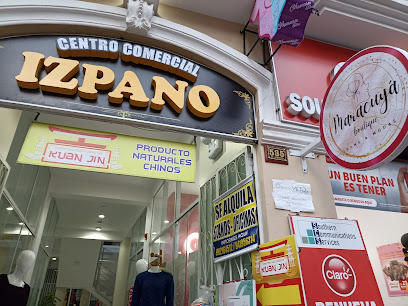
MA Personalizado Puno
Explore MA Personalizado Puno for exquisite handcrafted gifts that embody the spirit and culture of Puno, Peru.
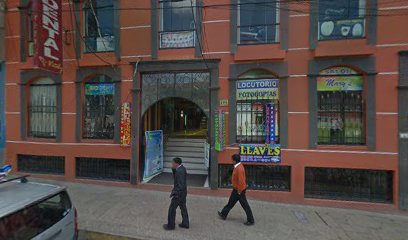
Novedades MINA
Explore Novedades MINA in Puno for authentic Peruvian gifts and handcrafted treasures that reflect the rich culture of the region.
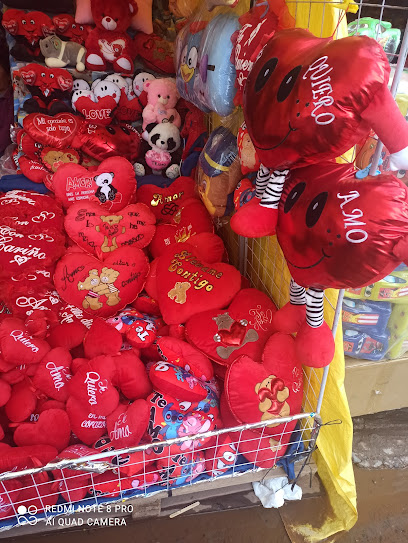
Tienda de regalos
Explore Tienda de Regalos in Puno: A charming gift shop offering authentic Peruvian handicrafts and unique souvenirs from the heart of the Andes.
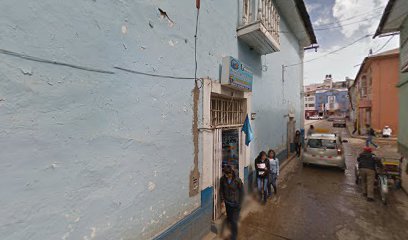
Mis detallitos
Explore Mis Detallitos in Puno for unique handcrafted gifts that celebrate the rich culture of Peru, perfect for souvenirs and special treasures.
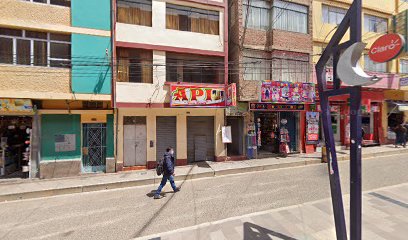
D&S-Boutique
Explore D&S-Boutique in Puno for unique dresses and accessories that capture the spirit of Peruvian culture in every stitch.
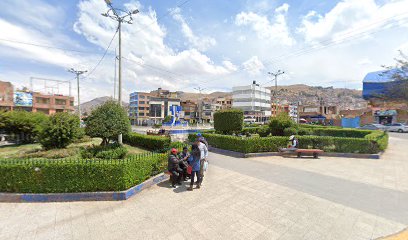
Encuentra de todo
Explore Encuentra de Todo in Puno for unique Peruvian gifts and souvenirs that capture the essence of your travels.

Regalitos Puno
Explore Regalitos Puno for unique Peruvian handicrafts and souvenirs that capture the spirit of the Andes.

Margarita Store
Explore Margarita Store in Puno for unique Peruvian gifts and authentic handicrafts that capture the beauty of the Andes.
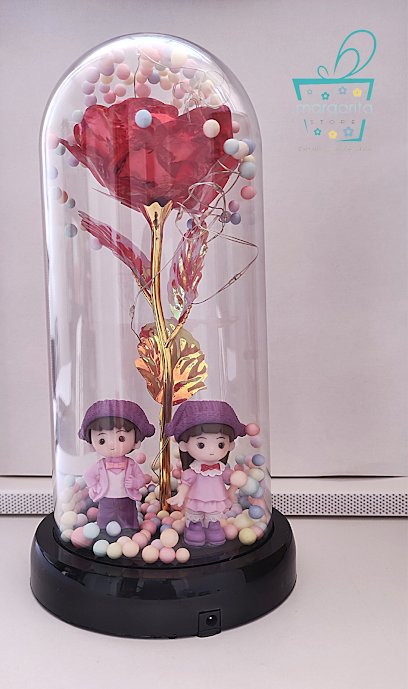
Luxor Store Puno
Explore Luxor Store Puno for trendy youth clothing that blends local culture with contemporary fashion in the heart of Puno.

Mimo's Obsequio & Antojo
Discover unique Peruvian handicrafts and souvenirs at Mimo's Obsequio & Antojo in Puno, a perfect stop for cultural treasures.
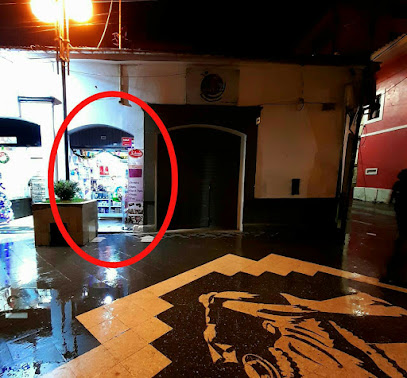
Essential bars & hidden hideouts
Mojsa Restaurant
Experience exceptional Peruvian cuisine at Mojsa Restaurant in Puno, where tradition meets modern culinary artistry.
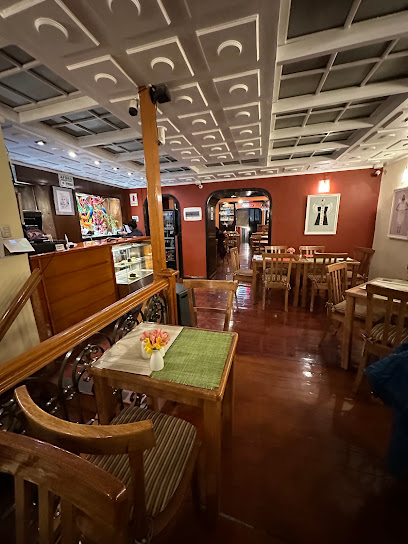
La Casona Restaurant
Experience the vibrant flavors of Puno at La Casona Restaurant, where traditional Peruvian grill dishes meet delicious pizza in a cozy ambiance.
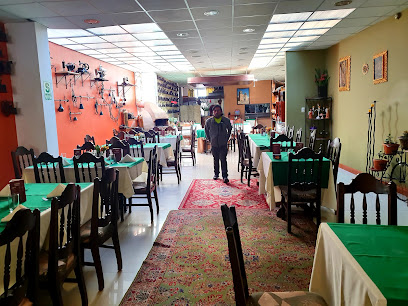
Cafe Bar de la Casa del Corregidor
Experience the authentic flavors of Puno at Cafe Bar de la Casa del Corregidor, where tradition meets taste in a cozy atmosphere.
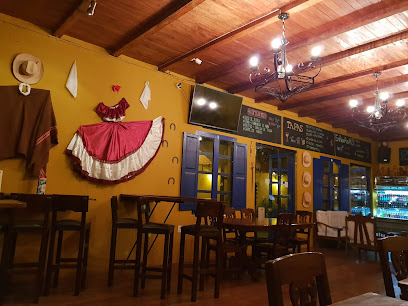
Balcones de Puno
Savor authentic Peruvian cuisine at Balcones de Puno, where local flavors and warm hospitality create an unforgettable dining experience.
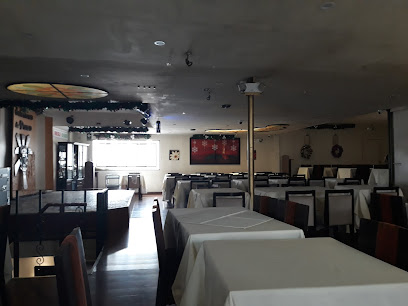
Remix Pizzería Resto Café Bar
Savor delicious pizzas and refreshing cocktails at Remix Pizzería Resto Café Bar, a must-visit culinary destination in Puno, Peru.

El Templo Video Pub
Discover the lively atmosphere of El Templo Video Pub in Puno, where affordable drinks and vibrant entertainment create the perfect nightlife experience.
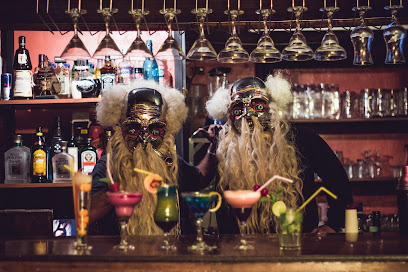
incabar
Indulge in the authentic taste of Peru at Incabar, a must-visit restaurant in Puno for an unforgettable dining experience.
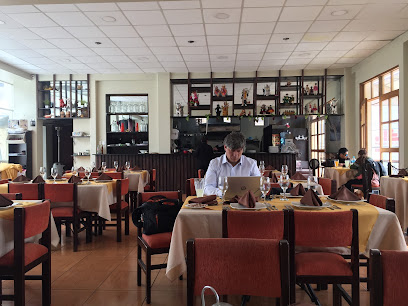
Positive Rock 'n Reggae
Join the lively atmosphere at Positive Rock 'n Reggae in Puno, where great music meets delicious cocktails for an unforgettable night out.
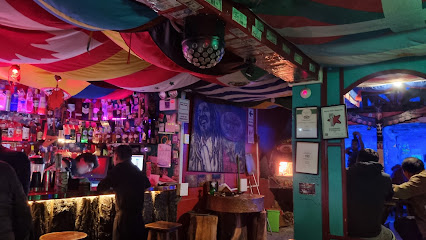
Pacha Mixology Coffee Molecular Bar
Experience the innovative fusion of molecular gastronomy and coffee culture at Pacha Mixology Coffee Molecular Bar in Puno, Peru.
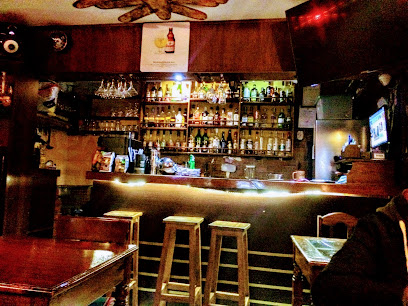
Kamizaraky Rock
Discover Kamizaraky Rock, a culinary gem in Puno offering delicious grills and breathtaking views in a vibrant and enchanting atmosphere.
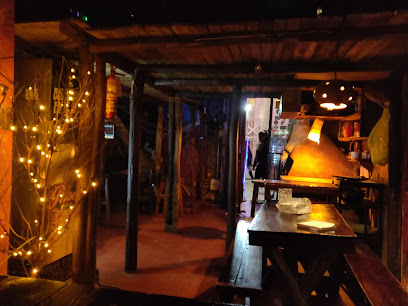
Alma Bar Restaurante
Discover the culinary delights of Puno at Alma Bar Restaurante, where local flavors meet a cozy dining atmosphere.

Kusillos Bar
Explore the vibrant nightlife at Kusillos Bar in Puno, where local culture meets a lively atmosphere perfect for unwinding.
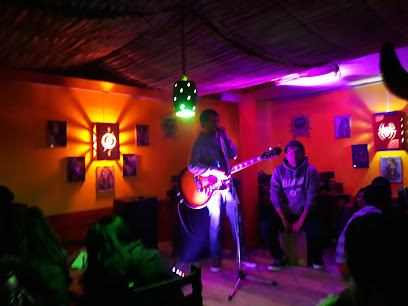
Taquile
Experience the rich culture and stunning beauty of Taquile Island on Lake Titicaca - a must-visit for any traveler seeking adventure and tradition.
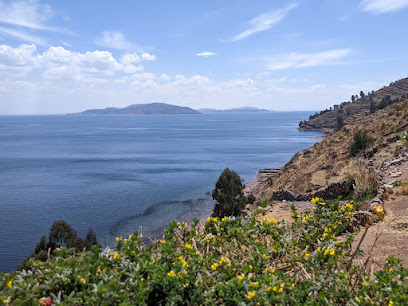
El Retorno Restobar
Experience the vibrant flavors of Puno at El Retorno Restobar, a gastropub blending local ingredients with international cuisine.
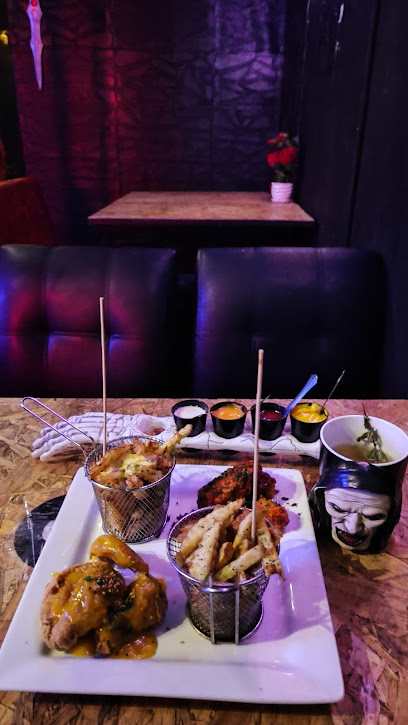
La PREVIA
Experience Puno's vibrant nightlife at La PREVIA, where local flavors and a lively atmosphere combine for an unforgettable evening.
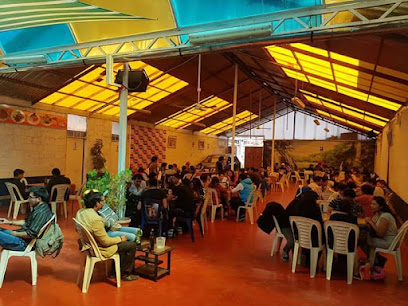
Local Phrases
-
- HelloQanqo
[kahn-koh] - GoodbyeQanqoy
[kahn-koy] - YesArí
[ah-ree] - NoManan
[mah-nan] - Please/You're welcomeKuntisunchis
[koon-tee-soon-chees] - Thank youSulpayki
[sool-pie-kee] - Excuse me/SorryPakarinkama
[pah-kah-reen-kah-mah] - How are you?Ima kashanki?
[ee-mah kah-shahn-kee] - Fine. And you?Allillan. Ima kashanki?
[ahl-lee-yahn. ee-mah kah-shahn-kee] - Do you speak English?Inglis simikuy?
[een-glees see-mee-kwee] - I don't understandMana atinkuni
[mah-nah ah-teen-koo-nee]
- HelloQanqo
-
- I'd like to see the menu, pleaseMenuytaanichikunata munanki, mana
[meh-noo-ytah-nee-chee-koo-nah-tah moo-nahn-kee. mah-nah] - I don't eat meatKarniriki manan
[kahr-nee-ree-kee mah-nan] - Cheers!Chin chin!
[cheen cheen] - I would like to pay, pleaseTupanichikunata munanki, mana
[too-pah-nee-chee-koo-nah-tah moo-nahn-kee. mah-nah]
- I'd like to see the menu, pleaseMenuytaanichikunata munanki, mana
-
- Help!Yanapay!
[yah-nah-pie] - Go away!Ishu!
[ee-shoo] - Call the Police!Polispa llaman
[poh-lees-pah yah-mahn] - Call a doctor!Doctor llaman
[dohk-tohr yah-mahn] - I'm lostLlasankichu
[yahn-sahn-kee-choo] - I'm illUnquy
[oon-kwee]
- Help!Yanapay!
-
- I'd like to buy...Rikurikunata munanichi...
[ree-koo-ree-koo-nah-tah moo-nah-nee-chee] - I'm just lookingRikurikunata munanichisqa
[ree-koo-ree-koo-nah-tah moo-nah-nee-chees-kah] - How much is it?Imataq?
[ee-mah-tahk] - That's too expensiveAncha kʼuchu
[ahn-chah koo-choo] - Can you lower the price?Aswan kachkanchikuy?
[ahs-wahn kahch-kahn-chee-kwee]
- I'd like to buy...Rikurikunata munanichi...
-
- What time is it?Imataq tinku?
[ee-mah-tahk teen-koo] - It's one o'clockJunka tukuy
[hoon-kah too-koo-ee] - Half past (10)Iskaypata tukuy
[ees-kai-pah-tah too-koo-ee] - MorningPukyu
[poo-k-yoo] - AfternoonChaski
[chahs-kee] - EveningTuta
[too-tah] - YesterdayHuk p'unchaw
[hook poon-chow] - TodayKunan p'unchaw
[koo-nahn poon-chow] - TomorrowKay p'unchaw
[kahy poon-chow] - 1Junka
[hoon-kah] - 2Iskay
[ees-kai] - 3Kimsa
[keem-sah] - 4Tawa
[tah-wah] - 5Phisqa
[fees-kah] - 6Suyu
[soo-yoo] - 7Qanchis
[kahn-chees] - 8Pusaq
[poos-ahk] - 9Isqun
[ees-koon] - 10Chunka
[choon-kah]
- What time is it?Imataq tinku?
-
- Where's a/the...?Aychata...
[ai-chah-tah] - What's the address?Simi tinku?
[see-mee teen-koo] - Can you show me (on the map)?Rikurikuytaanichikuy?
[ree-koo-ree-kwee-tahn-ee-chee-kwee] - When's the next (bus)?Imataq sapa (bus)?
[ee-mah-tahk sah-pah] - A ticket (to ....)Chakana (....)ta
[chah-kah-nah (....)tah]
- Where's a/the...?Aychata...
History of Puno
-
Puno's history traces back to the pre-Columbian era, where the Pukara civilization flourished around 200 BCE to 300 CE. This early culture is known for its impressive monolithic sculptures and ceramics. The Pukara people were skilled in agriculture, crafting, and irrigation, leaving behind significant archaeological sites such as the Pukara archaeological complex, which offers insights into their way of life and religious practices.
-
Following the decline of the Pukara civilization, the region around Puno came under the influence of the Tiwanaku Empire. Originating from present-day Bolivia, the Tiwanaku were renowned for their sophisticated agricultural techniques, including raised fields and terracing. Their influence extended to Puno, shaping the region's cultural and agricultural landscape. Key Tiwanaku sites include the Acora and Chucuito regions, where remnants of their architecture and pottery can still be found.
-
In the 15th century, the Inca Empire expanded its reach into the Lake Titicaca region, incorporating Puno into its vast territory. The Incas brought with them advanced agricultural practices, administrative organization, and their unique architectural style. The sacred nature of Lake Titicaca was integrated into Incan cosmology, with the lake considered the birthplace of the founders of the Inca civilization, Manco Capac and Mama Ocllo. The city of Puno itself was strategically important as a center for trade and administration.
-
The Spanish conquest in the 16th century marked a significant transformation for Puno. The city was officially founded in 1668 as 'San Juan Bautista de Puno' by Viceroy Count Lemos. Under Spanish rule, Puno became an important center for silver mining, particularly in the nearby town of Laykakota. The influx of Spanish settlers and the establishment of colonial institutions led to a blend of indigenous and European cultures, evident in the city's architecture, religious practices, and festivals.
-
Puno played a role in Peru's struggle for independence from Spanish rule in the early 19th century. The region saw several uprisings and battles as local populations resisted colonial control. After Peru's independence in 1821, Puno continued to develop as a significant cultural and economic center. The republican era brought modernity and infrastructure improvements, including the construction of the Puno-Cusco railway in the early 20th century, which boosted trade and tourism.
-
Puno is renowned for its vibrant cultural heritage, particularly its festivals. The most famous is the Feast of the Virgen de la Candelaria, held every February. This festival, recognized by UNESCO as an Intangible Cultural Heritage, features traditional dances, music, and elaborate costumes, reflecting the region's rich blend of indigenous and Spanish influences. Other notable celebrations include the Diablada and Morenada dances, which are integral parts of Puno's cultural identity.
-
Lake Titicaca, the world's highest navigable lake, is central to Puno's identity. The lake is steeped in legend and history, considered the cradle of Andean civilization. The Uros people, who live on floating reed islands on the lake, maintain a unique way of life that has persisted for centuries. Taquile and Amantani islands are also significant for their traditional weaving and agricultural practices, offering visitors a glimpse into age-old customs that are still very much alive.
Puno Essentials
-
Puno is located in southeastern Peru, on the shores of Lake Titicaca. The nearest airport is Inca Manco Cápac International Airport in Juliaca, about 44 kilometers away. From Juliaca, you can take a taxi or a bus to Puno, which typically takes about an hour. Alternatively, you can reach Puno by train from Cusco or Arequipa, with services provided by PeruRail. Buses are also a popular and cost-effective way to get to Puno from major cities like Lima, Cusco, and Arequipa.
-
Puno has a variety of transportation options for getting around. Taxis are readily available and can be hailed on the street or arranged through your hotel. Moto-taxis are a cheaper option for short distances within the city. Public buses and minibuses (combis) operate on various routes within Puno and to nearby attractions. For a more scenic experience, consider taking a boat tour on Lake Titicaca to visit the Uros Floating Islands or Taquile Island.
-
The official currency in Peru is the Peruvian Sol (PEN). Credit cards are widely accepted in hotels, restaurants, and larger shops in Puno. However, it is advisable to carry cash for smaller establishments and markets. ATMs are available throughout the city, but it's wise to withdraw sufficient cash before heading to more remote areas. Currency exchange services are also available in banks and exchange offices.
-
Puno is generally safe for tourists, but it's important to take standard precautions. Avoid walking alone at night in unfamiliar areas and keep an eye on your belongings in crowded places. Areas around the bus terminal and main market can be hotspots for pickpocketing. Always use registered taxis and avoid accepting rides from strangers. Be cautious when hiking or exploring remote areas and always inform someone of your plans.
-
In case of emergency, dial 105 for the police or 116 for ambulance services. The local hospital, Hospital Regional Manuel Núñez Butrón, is equipped to handle medical emergencies. It is highly recommended to have travel insurance that covers medical emergencies. Pharmacies are available in Puno for over-the-counter medications. For assistance, you can also contact your country's embassy or consulate in Peru.
-
Fashion: Do dress in layers, as the weather can change rapidly. Avoid wearing flashy jewelry. Religion: Do show respect when visiting churches and religious sites. Remove your hat and speak softly. Public Transport: Do have small change ready for bus fares. Don't be loud or disruptive. Greetings: Do greet people with a handshake or a polite 'Buenos días.' Eating & Drinking: Do try local dishes like ceviche and alpaca meat. Don't drink tap water; stick to bottled or boiled water.
-
To experience Puno like a local, visit the lively Mercado Central where you can find fresh produce and local crafts. Engage with the locals; they are often friendly and eager to share their culture. Don't miss the Puno Cathedral and the Yavari, a historic ship on Lake Titicaca. For an authentic experience, consider staying with a local family on Amantani Island. Attend the Fiesta de la Candelaria in February to witness traditional dances and music.
Trending Landmark in Puno
-
Plaza Mayor de Puno
-
Pino Park
-
Ricos Pan
-
Mareas Ceviche y Mas
-
Mirador Puma de Puno
-
Cerrito Huajsapata
-
Mojsa Restaurant
-
La Casona Restaurant
-
Mirador El Condor
-
Sonesta Hotel Posadas Del Inca Puno
-
Arco Deustua
-
Cafe Bar de la Casa del corregidor
-
Tulipans Restaurant
-
Casa Andina Premium Puno
-
Balcones de Puno
Nearby Cities to Puno
-
Things To Do in Copacabana
-
Things To Do in Arequipa
-
Things To Do in La Paz
-
Things To Do in Tacna
-
Things To Do in Arica
-
Things To Do in Cusco
-
Things To Do in Machu Picchu
-
Things To Do in Cochabamba
-
Things To Do in Iquique
-
Things To Do in Ayacucho
-
Things To Do in Potosi
-
Things To Do in Uyuni
-
Things To Do in Sucre
-
Things To Do in Ica
-
Things To Do in Huancayo


